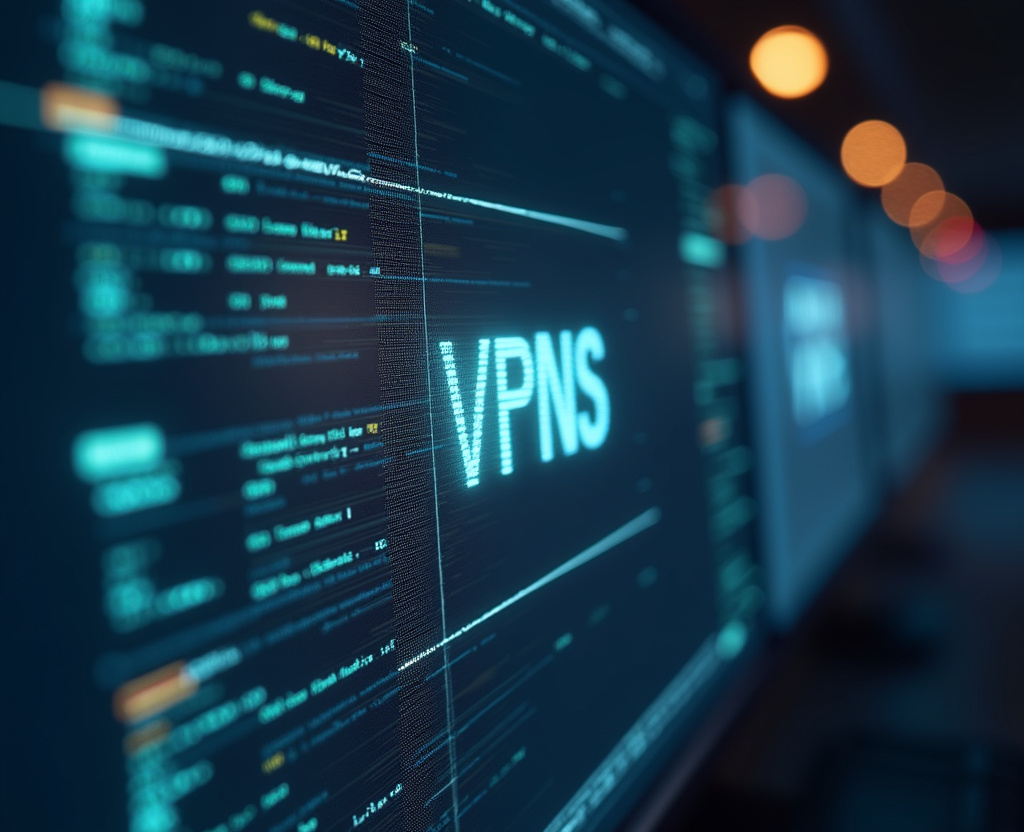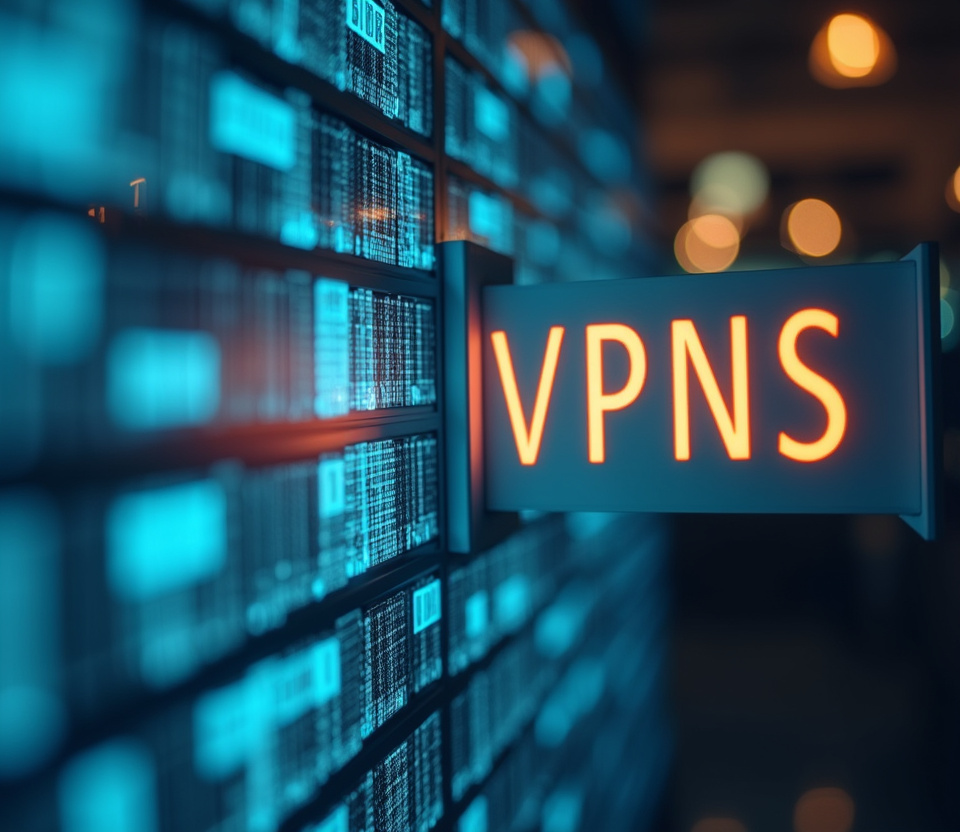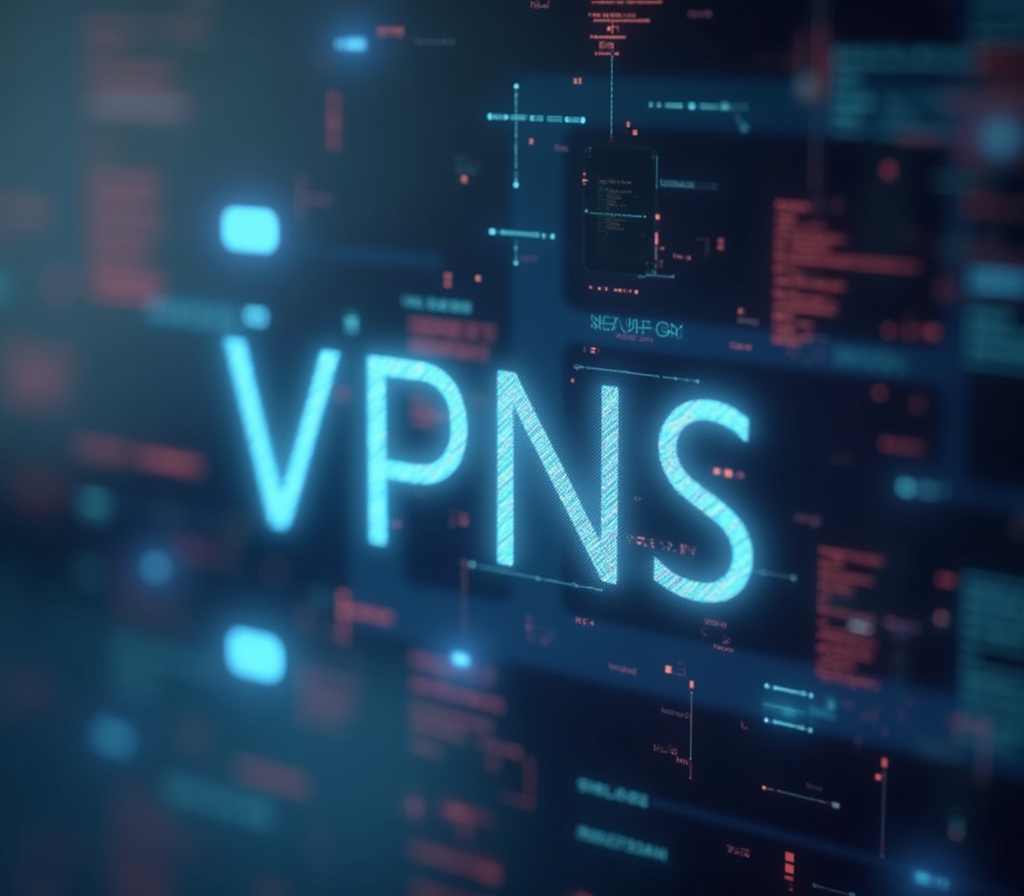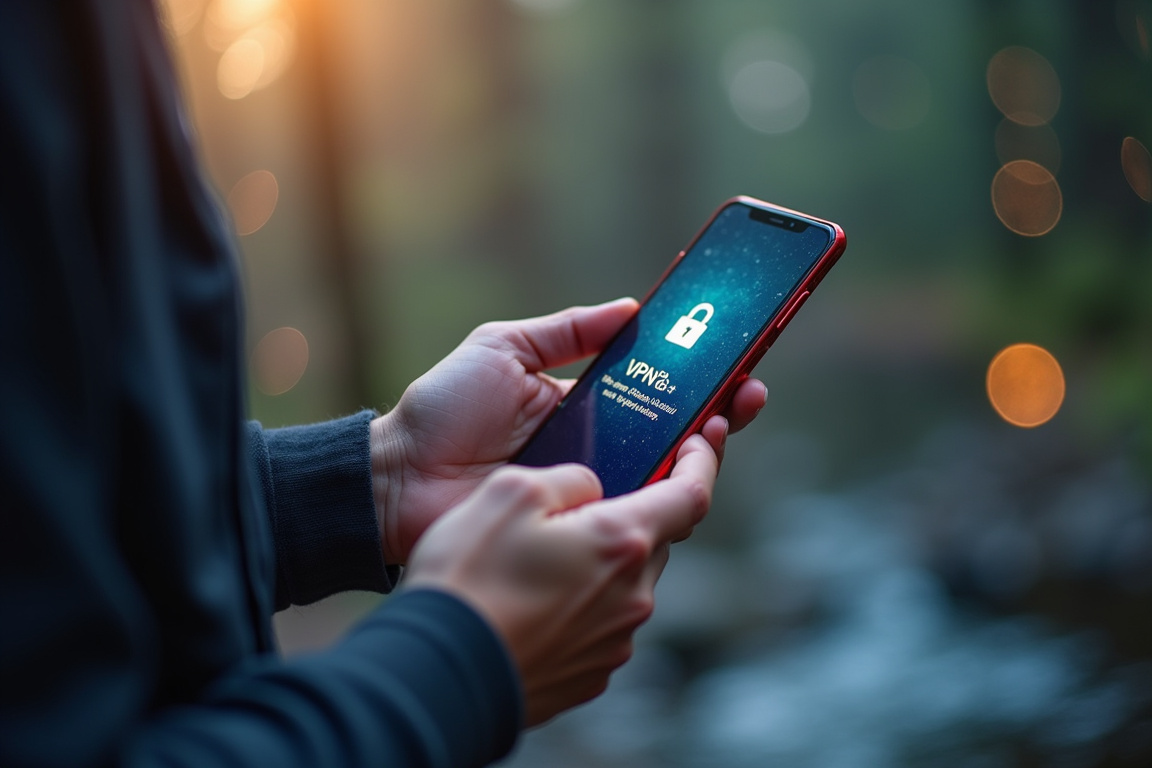VPNs for E-Libraries: Safeguarding Digital Collections

Table of Contents
VPNs for E-Libraries: Safeguarding Digital Collections
In an increasingly interconnected world, e-libraries have emerged as vital hubs for accessing and disseminating information, offering a wealth of resources to users worldwide. However, this digital accessibility also brings with it a unique set of security challenges. E-libraries hold vast digital collections, encompassing sensitive research data, copyrighted materials, and valuable intellectual property.
Protecting these assets and ensuring the privacy of e-library users is of paramount importance, especially in the face of ever-evolving cyber threats. A Virtual Private Network (VPN) provides a robust and effective solution for e-libraries, creating a secure and encrypted connection that safeguards digital collections, protects user data, and maintains content integrity. This article delves into the critical role of VPNs in securing e-libraries, exploring their benefits, implementation considerations, and their impact on enhancing user privacy and data security.
The implementation of an e-library VPN addresses the pressing need for robust digital collection security. By encrypting all data transmitted between the user's device and the e-library's servers, a VPN creates a secure tunnel that prevents unauthorized access and eavesdropping. This is especially critical when users access the e-library from public Wi-Fi networks, which are notoriously vulnerable to cyberattacks.
Without a VPN, sensitive data such as login credentials, search queries, and downloaded documents could be intercepted by malicious actors. Imagine a student conducting research on a sensitive topic, accessing the e-library from a coffee shop. Without a VPN, their search history and downloaded articles could be easily monitored by anyone on the same network, potentially leading to a breach of privacy and even identity theft.
A VPN effectively eliminates this risk by encrypting the data stream, making it unreadable to unauthorized parties. Furthermore, a VPN can mask the user's IP address, effectively anonymizing their online activity. This is essential for protecting user privacy and preventing the tracking of individual browsing habits.
In an era of increasing data breaches and privacy concerns, e-libraries have a responsibility to implement strong measures for user data protection. An e-library VPN offers a proactive approach to safeguarding user information and building trust with patrons. Consider a researcher accessing confidential research data stored in the e-library's digital repository.
Without a VPN, their IP address could be logged and tracked, potentially revealing their areas of interest and compromising the confidentiality of their research. A VPN ensures anonymity, allowing researchers to explore sensitive topics without fear of exposure. In the context of content integrity, a VPN can prevent tampering with digital collections.
By ensuring that data is transmitted securely and without modification, a VPN protects against malicious attacks that could alter or corrupt valuable resources. This is particularly important for scholarly articles, historical documents, and other critical materials that must be preserved in their original form. Envision a scenario where a hacker attempts to inject malicious code into a scholarly article within the e-library's database.
Without a VPN, this attack could potentially succeed, altering the content of the article and compromising its validity. A VPN provides a secure barrier against such attacks, ensuring that the digital collections remain intact and trustworthy. Employing a VPN for libraries, therefore, functions as a foundational element within a comprehensive cybersecurity strategy, providing a secure framework for accessing and managing digital content.
It acts as a digital guardian, upholding the principles of information accessibility while fortifying the defenses against evolving cyber threats, making it an indispensable asset for any modern e-library. Choosing the right VPN setup involves carefully assessing the specific requirements of the e-library and its users. Factors to consider include the number of simultaneous connections, the level of encryption, and the availability of features such as multi-factor authentication and intrusion detection.
Open-source VPN solutions offer greater flexibility and customization, while commercial VPN providers provide managed services and support. Ultimately, the selection of a VPN should be guided by a thorough assessment of the e-library's security needs and a commitment to protecting both digital collections and user privacy.
The primary value of an e-library VPN lies in its ability to ensure user data protection, a facet of cybersecurity that’s increasingly highlighted in policy and public discourse. The digital realm is fraught with privacy risks, and libraries, as institutions built on trust and access to information, must take proactive measures to mitigate these threats. VPNs achieve this by creating an encrypted tunnel for data transmission.
When a user connects to the e-library's resources through a VPN, their internet traffic is rerouted through a secure server, masking their IP address and encrypting all data sent and received. This encryption scrambles the data, rendering it unreadable to unauthorized parties. Think of it as sending a letter in a locked box; even if someone intercepts the box, they can't read the contents without the key.
This action is crucially important when users access e-library resources from unsecured networks, such as public Wi-Fi hotspots in cafes, airports, or hotels. These networks are often targeted by hackers seeking to intercept sensitive information, including login credentials, personal data, and research materials. Imagine a student logging into their e-library account on a public Wi-Fi network to access course materials.
Without a VPN, their username and password could be intercepted, giving hackers access to their entire e-library account, including their borrowing history and any personal information stored within the system. An e-library VPN effectively shields users from these vulnerabilities, ensuring that their online activity remains private and secure. Furthermore, the anonymization of user traffic through IP address masking provides an additional layer of privacy.
By concealing the user's real IP address, the VPN prevents websites, advertisers, and other third parties from tracking their online behavior. This is particularly important in the context of e-libraries, where users may be accessing sensitive or controversial materials. For instance, a researcher studying political dissent might not want their online activity to be tracked and potentially associated with their personal identity.
The use of an e-library VPN allows users to explore diverse perspectives and conduct research without fear of surveillance or reprisal. Consider a journalist investigating corruption who needs to access government documents stored in an e-library. The VPN protects their identity and location, preventing them from being targeted by those who might wish to suppress their investigation.
In addition to protecting user privacy, an e-library VPN can also enhance content integrity. By encrypting data transmissions, a VPN can prevent malicious actors from tampering with or altering digital resources. This is especially critical for scholarly articles, historical documents, and other materials that must be preserved in their original form.
Without a VPN, these resources could be vulnerable to cyberattacks that could compromise their authenticity and reliability. Picture a historical archive within an e-library being targeted by hackers who attempt to rewrite history by altering digital documents. A VPN makes it significantly more difficult for them to succeed, preserving the integrity of the historical record.
A strong VPN implementation also supports the library's compliance with data protection regulations. Many jurisdictions have enacted laws that require organizations to protect the personal data of their users. By implementing an e-library VPN, libraries can demonstrate their commitment to data protection and comply with these legal requirements.
This commitment is not only ethical but also legally imperative, avoiding potential fines and reputational damage. The integration of VPNs within e-libraries isn't merely a technological upgrade, but also a reinforcement of the library's core values. It underscores a commitment to intellectual freedom, privacy, and the secure dissemination of information.
Choosing an adequate VPN entails a detailed evaluation of the library’s specific needs, focusing on encryption strength, server locations, and adherence to privacy policies. The choice should reflect a balance between usability, security, and cost-effectiveness, ensuring that the VPN solution truly serves the library's mission and protects its users. By carefully considering these factors, e-libraries can implement VPN solutions that provide robust protection for user data, content integrity, and their overall cybersecurity posture.
Maintaining content integrity and ensuring the reliability of digital collections are paramount concerns for e-libraries. The digital age has brought unprecedented access to information, but it has also created new opportunities for malicious actors to tamper with or corrupt valuable resources. An e-library VPN plays a crucial role in safeguarding content integrity by creating a secure and encrypted channel for data transmission.
By encrypting all data sent and received between the user's device and the e-library's servers, a VPN prevents unauthorized access and modification of digital resources. This is particularly important for scholarly articles, historical documents, and other materials that must be preserved in their original form. Without a VPN, these resources could be vulnerable to cyberattacks that could compromise their authenticity and reliability.
Imagine a scenario where a research paper is altered maliciously, changing the findings or conclusions. This could have serious consequences, especially if the paper is used as the basis for policy decisions or further research. A VPN helps prevent such tampering by ensuring that the data is transmitted securely and without the possibility of interception or modification.
The challenge in preserving content integrity also extends to the prevention of copyright infringement and unauthorized distribution of copyrighted materials. By implementing an e-library VPN, libraries can control access to these resources and prevent them from being shared without permission. This is essential for protecting the intellectual property rights of authors and publishers.
Consider the case of a digital archive containing copyrighted books and articles. Without a VPN, users could potentially download these materials and share them illegally, infringing on the copyright holders' rights. A VPN helps prevent this by controlling access and ensuring that only authorized users can access these materials.
An e-library VPN can also be used to prevent denial-of-service (DoS) attacks, which can disrupt access to digital collections and make them unavailable to legitimate users. By masking the IP addresses of e-library users, a VPN makes it more difficult for attackers to target the e-library's servers. Think of a situation where a hacker launches a DoS attack against an e-library, flooding its servers with traffic and making it impossible for real users to access the site.
A VPN can mitigate this risk by hiding the IP addresses of the e-library's users, making it harder for the attacker to identify and target the servers. Beyond simply encrypting data, some VPN solutions offer advanced features that further enhance content integrity. These features may include intrusion detection systems (IDS) that monitor network traffic for suspicious activity and data loss prevention (DLP) tools that prevent sensitive data from leaving the e-library's network.
These advanced features add another layer of protection, making it even more difficult for malicious actors to compromise the integrity of digital collections. When selecting a VPN for an e-library, it's important to consider not only the level of encryption but also the provider's security policies and practices. Look for a provider that has a strong track record of protecting user data and that is transparent about its security measures.
It's also important to choose a provider that offers reliable customer support and is responsive to security concerns. Furthermore, regular security audits and penetration testing should be conducted to identify and address any vulnerabilities in the VPN infrastructure. These audits should be performed by independent security experts and the results should be made available to the e-library's IT staff.
Maintaining content integrity is an ongoing process that requires vigilance and a proactive approach to security. An e-library VPN is a valuable tool in this effort, but it's only one part of a comprehensive security strategy that should also include strong access controls, regular backups, and employee training.
VPNs for Services: Enhancing User Security and Privacy
Selecting the appropriate VPN tunneling protocol is crucial for optimizing security and performance within an e-library environment. Different protocols offer varying levels of encryption, speed, and compatibility, and the choice should be aligned with the specific needs and technical infrastructure of the library. Among the most commonly used VPN protocols, Internet Protocol Security (IPSec) stands out for its robust security and interoperability.
IPSec provides two distinct security methods: Authentication Header (AH) and Encapsulating Security Payload (ESP). AH authenticates the origin of the data packets, ensuring that they haven't been tampered with during transit. ESP, on the other hand, encrypts the data payload itself, rendering it unreadable to unauthorized parties.
The combination of AH and ESP provides a comprehensive security solution, protecting both the integrity and confidentiality of the data transmitted. Moreover, IPSec can operate in two modes: transport mode and tunnel mode. Transport mode encrypts only the data payload while leaving the IP header exposed, making it suitable for secure communication between two hosts on a private network.
Tunnel mode, conversely, encrypts the entire IP packet, including the header, creating a secure tunnel between two networks. This is particularly useful for site-to-site VPNs, connecting different branches of the e-library or providing secure access for remote users. Another widely adopted protocol is Secure Sockets Layer (SSL) VPN, which leverages the established SSL/TLS protocol used for securing web traffic.
SSL VPNs are relatively easy to deploy and manage, as they typically utilize standard web browsers as clients. This eliminates the need for installing specialized VPN client software on user devices, simplifying the user experience and reducing administrative overhead. However, SSL VPNs may offer lower performance compared to IPSec, especially for bandwidth-intensive applications.
OpenVPN, an open-source VPN solution, offers a flexible and customizable approach to VPN implementation. OpenVPN supports a variety of encryption algorithms and protocols, allowing e-libraries to tailor their VPN configuration to meet specific security requirements. It can be deployed in both routed and bridged modes, providing flexibility in network topology and integration.
OpenVPN's open-source nature also allows for greater transparency and scrutiny, enabling security experts to identify and address potential vulnerabilities. Point-to-Point Tunneling Protocol (PPTP) is an older protocol that is generally considered less secure than IPSec and SSL VPNs. PPTP has known security vulnerabilities and is not recommended for use in environments where strong security is required.
While it may be easier to set up, its inherent weaknesses make it unsuitable for protecting sensitive e-library data. Layer 2 Tunneling Protocol (L2TP) is often used in conjunction with IPSec to provide enhanced security. L2TP establishes the VPN tunnel, while IPSec provides the encryption and authentication.
This combination offers a robust security solution, but it can also be more complex to configure than SSL VPNs. When selecting a VPN tunneling protocol, e-libraries should carefully consider their security requirements, performance needs, and technical capabilities. Factors such as the sensitivity of the data being transmitted, the number of concurrent users, and the available bandwidth should all be taken into account.
It's also important to choose a protocol that is compatible with the e-library's existing network infrastructure and that is supported by the VPN hardware or software being used. Regular security assessments and penetration testing should be conducted to ensure that the chosen protocol is providing adequate protection against evolving cyber threats. The VPN configuration should also be regularly reviewed and updated to address any newly discovered vulnerabilities.
Enhancing E-Library Security: A Multi-Layered Approach
Implementing and maintaining an e-library VPN involves careful planning, configuration, and ongoing monitoring to ensure optimal security and performance. A well-defined VPN policy is essential for establishing clear guidelines for VPN usage, access control, and security protocols. This policy should outline who is authorized to use the VPN, what resources they are permitted to access, and what security measures they are required to follow.
The policy should also address topics such as password management, acceptable use of the network, and procedures for reporting security incidents. Regular training should be provided to all VPN users to educate them about the VPN policy and best practices for secure VPN usage. This training should cover topics such as avoiding phishing scams, protecting against malware, and reporting suspicious activity.
Users should also be instructed on how to properly configure and use the VPN client software. Access control is a critical aspect of VPN security. The principle of least privilege should be followed, granting users only the minimum level of access required to perform their job duties.
Role-based access control (RBAC) can be used to simplify access management by assigning permissions based on user roles. Multi-factor authentication (MFA) should be implemented to provide an extra layer of security when users log in to the VPN. MFA requires users to provide two or more forms of authentication, such as a password and a one-time code generated by a mobile app.
This makes it significantly more difficult for attackers to gain unauthorized access to the VPN, even if they have obtained a user's password. Regular monitoring of VPN activity is essential for detecting and responding to security incidents. VPN logs should be regularly reviewed for suspicious activity, such as unusual login attempts, excessive data transfer, or connections from unexpected locations.
Security information and event management (SIEM) systems can be used to automate the analysis of VPN logs and identify potential security threats. Intrusion detection systems (IDS) should also be deployed to monitor network traffic for malicious activity. These systems can detect and respond to a variety of attacks, such as denial-of-service attacks, port scanning, and malware infections.
Regular security audits and penetration testing should be conducted to identify and address any vulnerabilities in the VPN infrastructure. These audits should be performed by independent security experts and the results should be used to improve the security of the VPN. The VPN configuration should also be regularly reviewed and updated to address any newly discovered vulnerabilities.
Patch management is a critical aspect of VPN maintenance. VPN software and hardware should be regularly patched to address security vulnerabilities and improve performance. Patches should be applied promptly and tested thoroughly before being deployed to the production environment.
Performance monitoring is also important for ensuring that the VPN is providing adequate performance for users. VPN performance can be affected by a variety of factors, such as network congestion, server load, and VPN protocol overhead. Regular monitoring of VPN performance can help identify bottlenecks and optimize the VPN configuration for optimal performance.
In conclusion, implementing and maintaining an e-library VPN requires a comprehensive approach that includes a well-defined VPN policy, strong access controls, regular monitoring, and ongoing maintenance. By following these best practices, e-libraries can ensure that their VPN provides a secure and reliable connection for users and protects their valuable digital collections. The ongoing commitment to security best practices will ensure the e-library VPN remains a strong defense against ever-evolving cybersecurity threats and a protector of user privacy and content integrity.
Stay Updated
Get the latest VPN news, tips, and exclusive deals to your inbox.




